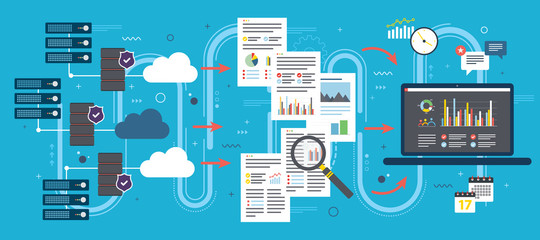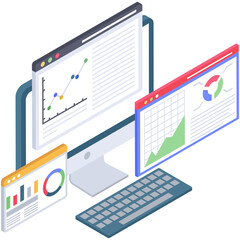From Spreadsheets to Strategic Insights: Why SMEs Are Embracing AI-Powered Analytics
Small and midsize enterprises (SMEs) often encounter challenges with their data capabilities due to fragmented systems, manual processes, and limited time for analysis. Generative AI (GenAI) presents a significant advancement by replacing time-consuming spreadsheet tasks with dynamic and automated reporting and forecasting.
As of January 2025, Gartner reports that nearly two-thirds of organizations have deployed generative AI across various departments, and approximately 20% have implemented production-level generative AI solutions. This integration increasingly includes functions such as IT, marketing, sales, and finance.
By 2026, Gartner predicts that 75% of businesses, including SMEs, will generate synthetic customer data to improve their models, which is crucial for forecasting when real data is limited.
What is Generative AI (and Why SMEs Should Care)
Generative AI refers to models that can create new content—text, code, images, and more—based on input data. Unlike traditional AI, which classifies or predicts, GenAI generates. In business, this means generating reports, dashboards, forecasts, and insights with simple prompts.
Reporting Made Smarter
SMEs often rely on static reports and Excel-based dashboards. GenAI enables:
– Natural language queries to auto-generate charts
– Automated executive summaries
– Dashboards delivered via email or chatbot
Examples: Microsoft Copilot in Excel/Power BI, Tableau Pulse, and Zoho Zia.
Forecasting with Greater Confidence
SMEs typically lack deep statistical modeling teams. GenAI enables:
– Demand forecasting from multiple sources (POS, CRM, Web Analytics)
– Synthetic data generation to boost prediction accuracy
– Conversational what-if modeling
Tools like ChatGPT, Power BI Forecasting, and Amazon Forecast simplify the process.
Real-World SME Use Cases
– A retail SME uses AI to combine POS and website traffic for sales forecasting
– A manufacturer blends ERP and supplier data to optimize inventory
– A professional services firm uses CRM and time tracking for revenue planning
Benefits SMEs Are Seeing
– Faster, data-driven decision-making
– Self-service access to insights
– Improved forecast precision
– More agile response to market trends
Challenges and Considerations
– Data quality must be addressed upfront
– Staff training and change management
– Privacy and ethical AI use
How to Get Started
– Use GenAI embedded in platforms you already have (Power BI, Zoho, Salesforce)
– Engage data service providers for integration and strategy
– Start with pilot projects focused on reporting or forecasting
According to Gartner’s 2025 roadmap, signals that SMEs are not just experimenting: they’re actively embedding generative AI into reporting and forecasting.
They’re doing it by:
- Harnessing synthetic data to fill gaps
- Empowering business teams with self-service, AI-driven tools
- Operating structured pilots with clear metrics by partnering with an external experienced partner focused on data and AI work, like Fuzzitech
- Minimizing risk through a practical data governance framework
The result? SMEs can rapidly scale from spreadsheet reporting to strategic forecasting without needing elite data teams.
GenAI makes advanced analytics accessible to small and medium-sized enterprises (SMEs). These businesses no longer need a dedicated data science team to compete with larger companies. With the right tools and partnerships, they can gain predictive insights that drive innovative strategies.
Please explore Fuzzitech’s range of data services to find the one that best meets your needs.




